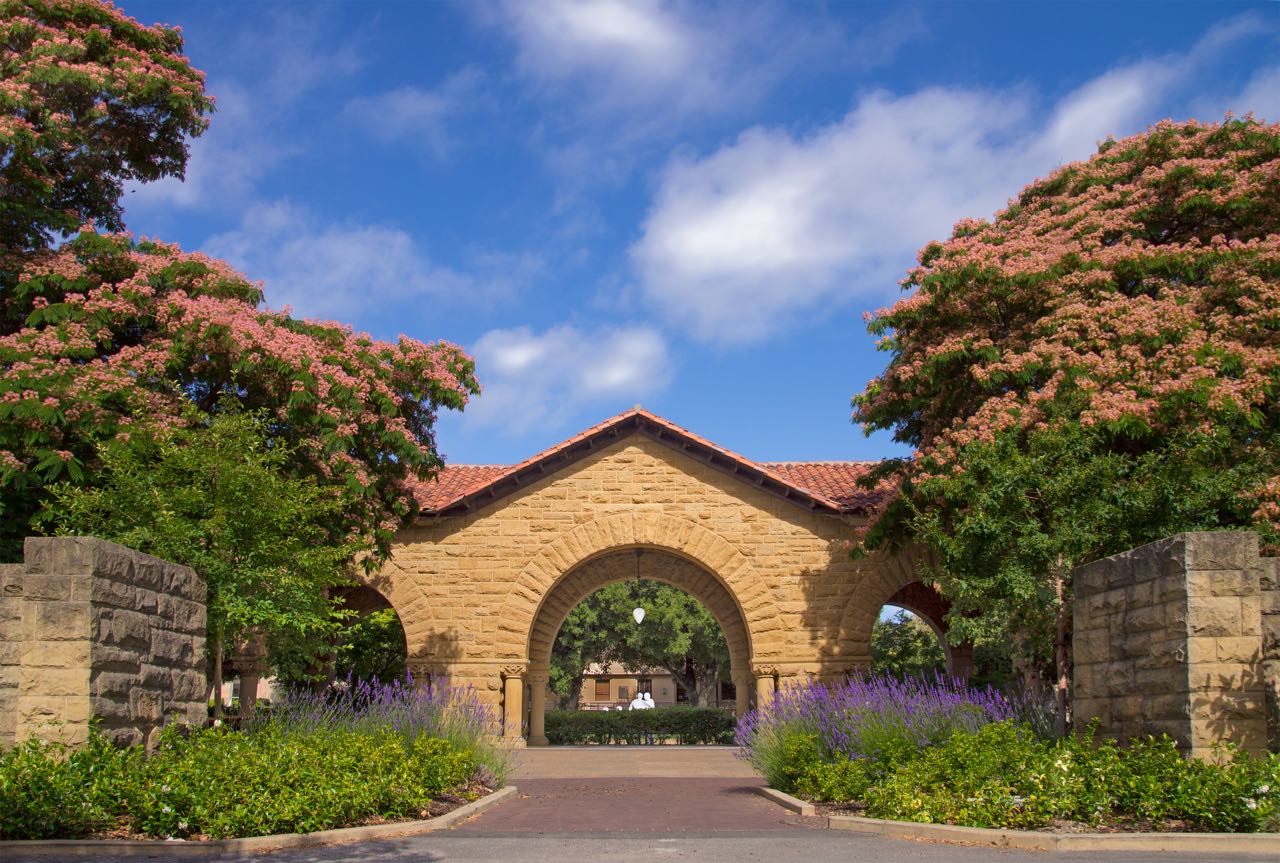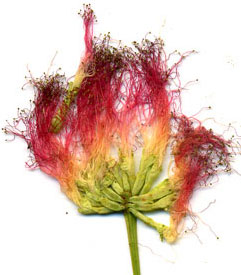Albizia julibrissin
 silk tree
silk tree

The feathery foliage resembles that of some acacias, and the flowers, consisting of a puff ball of pink stamens, are also similar. However, the flower is much larger and the stamens, unlike those of the acacia, are united at their bases. There are glands on the leaf stalks and at night the leaflets fold up. Late in the season numerous pods will be found containing collectible, shiny brown seeds. Separating the seeds from the pods is a therapeutic activity and a bowl of the seeds, as with honey locust and acacia seeds, can have the same effect as worry beads. Children with good hand-eye coordination might enjoy racing to separate the seeds from a pod or two.
A very attractive grouping, spectacular in late spring, is situated between the inner and outer quadrangles in the northwest corner. One can be seen on the northwest side of Residential and Dining Enterprises, off Pampas Lane, and another where the Sonoma Terrace bike path enters Stanford Avenue. Several specimens used to grow on San Francisco Terrace.
Albizzia and Chinese pistache are among the deciduous trees that exercise extreme caution before venturing forth new leaves; but in early April you can recognize these few remaining leafless species on campus, the Albizzia by last year’s seed pods and the male pistaches by the voluminous masses of pollen-bearing flowers. Julibrissin is the Persian name of the tree but it ranges across Asia to China, and the hardy ‘Rosea’ comes from Korea. It is widely planted in southern Europe. The seeds germinate readily if left to stand overnight in a cup to which boiling water is added.
In the trecento and quattrocento, the noble Albizzi family competed for power over Florence and are remembered to this day by the Via degli Albizzi situated in the part of the city that retains the old rectangular Roman street layout. No true humanist would use the ignorant spelling Albizia. Francesco degli Albizzi brought the silk tree into gardens in 1749.
Illustrations: typical ground litter.
About this Entry: The main text of this entry is from the Albizzia julibrissin entry in the book Trees of Stanford and Environs, by Ronald Bracewell, published 2005. Entry’s genus name reluctantly corrected to Albizia from Albizzia, though left intact when used as a common name in the text (Dec 2017, SP). Light edits, Stanford Ave specimen added, all locations verified (Jun 2020, SP).





